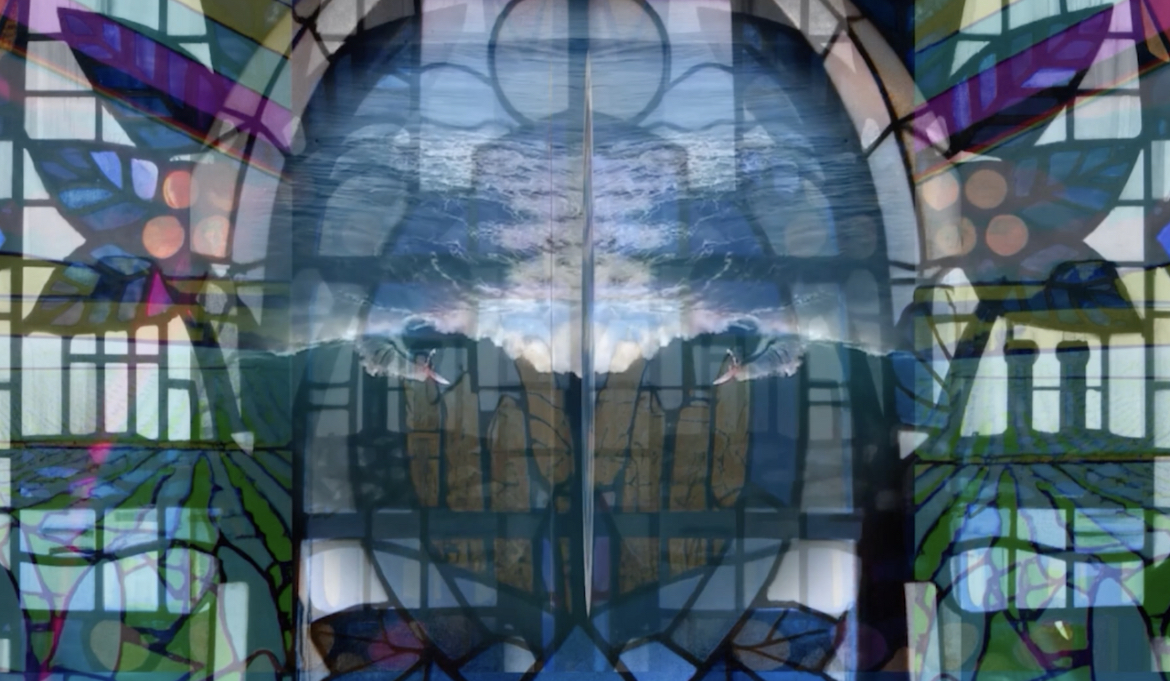There Are More Things in Heaven and Earth than Are Dreamt of in Your Philosophy, Horatio
Brochure essay by Julie Arnold
There Are More Things in Heaven and Earth than Are Dreamt of in Your Philosophy, Horatio
Photograms are a direct means of producing a photographic image. In the darkroom, objects are placed on photosensitive paper and exposed to light. In this way the intermediate steps involving film and camera are dispensed with. In simple technical language, a photogram is a record of an object’s ability to filter and refract light. In areas where no obstruction oflight occurs, we read darkness; in areas where light has been absorbed, we read lightness. Such is the reverse logic of the photographic process. What we are presented with is a rich, black, two-dimensional surface on which the artist can construct relationships between form, texture, and gradations of light. And this, for the most part, is exactly what has come down to us under various names (Schadographs, Rayographs, photograms) from the history of art and photography. In the 1920s and 1930s such work was seen as a way of moving the medium away from the documentary tradition and into the realm of pure artistic expression – painting with light. In the photograms of Christian Schad, Man Ray, and Laszlo Moholy- N agy the objects chosen are often totally removed from the function they assume in the world beyond the abstract composition. Such were the concerns of a particular strand of modernism. But what use might a contemporary artist find for the process today?
In Laura Lamb’s exhibit, There Are More Things in Heaven and Earth than Are Dreamt of in Your Philosophy, Horatio, strict formal concerns are pushed aside and our propensity for narrative encouraged. The objects of Lamb’s choosing are transformed into beautiful studies of chiaroscuro, but they never totally abandon the identities they hold in the world outside art. These are the objects that fill Goodwill shops and at least one drawer in almost every household. They are commonly the inexpensive, mass-produced kitsch objects – the child’s toy or the dated novelty item. We are accustomed to think of such material as society’s refuse, connoting bad taste and cheap construction. Adherents to this view would seem to ignore the nebulous yet ubiquitous investment people make in inanimate objects, which is, quite often, undeterred by a item’s undistinguished origins. Just as toys can spawn a fantasy world for a child, so too these objects have the potential to evoke associations, emotions, and ideas. This potential is realized in Lamb’s work due to her obvious imaginative attachment to her materials, her command and regard for the pleasures of narrative, and the eerie, visual seductiveness of the photogram.
I have spoken generally about the narrative quality in Lamb’s art. In more precise terms, four of the five works are divided into individual panels that come together as if depicting one scene in a story. Most typically, the moment frozen is one of suspended animation, a myriad of creatures and objects caught in mid-flight, having been blown or pulled by force. In This one, too a tension is created as we watch fragile objects swirl just moments before the inevitable finale. As spectators, we are caught at a particular moment – a course has been set and an end awaits. In compositions such as Remarkable Rocket, the tone shifts to one of macabre glee as the great leveller, death, makes an appearance.
References to and from the visual and theatrical arts abound throughout There Are More Things in Heaven and Earth than Are Dreamt of in Your Philosophy, Horatio. This very title comes from Shakespeare’s Hamlet, a tragedy liberally punctuated by cynical wit. When citing Francisco Goya and his series Disparates, engravings that depict the follies of humankind, it is the Spaniard’s turn of words, when annotating his images, that particularly draw Lamb’s attention. “Was Die Herren Matrosen Sagen” of “The Sailors’ Tango” is the name of a Bertolt Brecht/Kurt Weill song from the play Happy End. I’ll conclude by citing this reference in some detail, as I believe Brecht’s lyrics reveal much about the tone and sentiment expressed in Lamb’s work. The song begins as the sailors cast off with not a care in the world, their boat well stocked with scotch and cigars:
We’re off on the sea and it’s “Who gives a damn?” Life’s perfect, ’cause nothing is missing. . . The whole world’s our pot and – we’re pissing!
By song’s end the ship has sunk while within sight of its destination and all on board are lost.
. . . now let me tell you a fact that we all ought to know: When you stand before the throne where Our Lord is sitting, you may have been bragging a lifetime or so, but now, when it matters, you’re shitting.
Ah, the sea is blue, so blue
and all the world goes on its way.
But when your day is over, there is no other day.
Ah, the sea is blue, so blue
you don’t have that long to stay.
Ah, the sea is blue, so blue,
Ah, the sea is blue, so blue.
— Julie Arnold, 1991
Julie Arnold is an artist and art writer living in Toronto.




